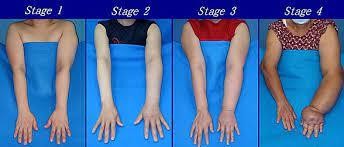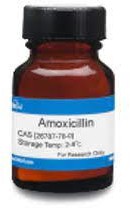The nurse working in a postoperative surgical clinic is assessing a woman who had a left radical mastectomy for breast cancer. Which factor puts this client at greatest risk for developing lymphedema?
Her healthcare provider now prescribes a calcium channel blocker for hypertension.
She sustained an insect bite to her left arm yesterday.
She has lost twenty pounds since the surgery.
Her hobby is playing classical music on the piano.
The Correct Answer is B
Choice A rationale: Her healthcare provider prescribing a calcium channel blocker for hypertension is not directly linked to lymphedema.
Choice B rationale: Sustaining an insect bite to her left arm yesterday - Trauma or injury, such as an insect bite, to the affected limb post-mastectomy can increase the risk of
lymphedema.
Choice C rationale: Losing twenty pounds since the surgery might influence overall health but doesn’t specifically relate to lymphedema.
Choice D rationale: Her hobby of playing classical music on the piano is unrelated to the risk of developing lymphedema.

Nursing Test Bank
Naxlex Comprehensive Predictor Exams
Related Questions
Correct Answer is D
Explanation
Choice A rationale: Metronidazole is not typically used to treat genital warts caused by HPV.
Choice B rationale: HPV can be transmitted through various forms of sexual contact, including oral sex.
Choice C rationale: Condoms reduce but do not eliminate the risk of HPV transmission. Choice D rationale: Genital warts caused by HPV increase the risk of cervical cancer,
necessitating regular Pap smears for monitoring and early detection.
Correct Answer is A
Explanation
Choice A rationale: This is the correct answer. It corresponds to 300 mg of the drug ((300x 5)/250).
Choice B rationale: This is incorrect because it is too low. It is the amount of milliliters that corresponds to 200 mg of amoxicillin trihydrate, which is less than the prescribed dose of 300 mg.
Choice C rationale: This is incorrect because it is too low. It is the amount of milliliters that corresponds to 60 mg of amoxicillin trihydrate, which is not enough to treat an oral infection.
Choice D rationale: This is incorrect because it is too low. It is the amount of milliliters that corresponds to 250 mg of amoxicillin trihydrate, which is less than the prescribed dose of 300 mg.
 |
Whether you are a student looking to ace your exams or a practicing nurse seeking to enhance your expertise , our nursing education contents will empower you with the confidence and competence to make a difference in the lives of patients and become a respected leader in the healthcare field.
Visit Naxlex, invest in your future and unlock endless possibilities with our unparalleled nursing education contents today
Report Wrong Answer on the Current Question
Do you disagree with the answer? If yes, what is your expected answer? Explain.
Kindly be descriptive with the issue you are facing.
